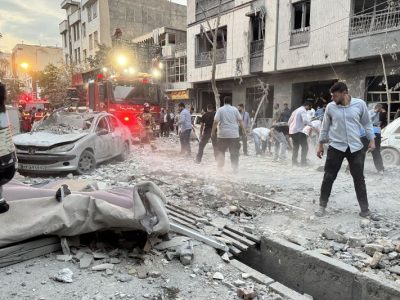
Investigators have recovered equipment from this week’s tragic plane crash in Ahmedabad, India, which could shed light on the final moments on the flight deck.
The Boeing 787-8 Dreamliner’s cockpit voice recorder and flight data recorder, which were recovered from on top of the medical college hostel building where the plane crashed, could put to rest some of the speculation into the investigation that killed 241 people aboard the aircraft, according to aviation industry experts.
The flight data recorder was recovered from the rear end of the plane.
“It’s quite dramatic,” Goelz said. “It looked to me like the plane was trying to land at the end. It was flaring, but we just won’t know until we get the boxes back.”
The Aircraft Accident Investigation Bureau of India is in possession of the recorders and other potential pieces of evidence for the investigation. The data recorders are expected to give some insight into what happened during the flight’s final moments, when pilots were making critical decisions.
Less than a minute after takeoff, staff on the plane gave a mayday call to air traffic control, Indian civil aviation authorities said.
The deadly crash has drawn even more global attention to air safety and spurred on public anxieties about flying. There have already been several aviation tragedies and incidents this year — including January’s midair collision between an Army Black Hawk helicopter and an American Airlines regional jet — that have prompted calls to increase safety measures.
Boeing’s Dreamliner
Boeing’s 787-8 Dreamliner is highly regarded by many aviation experts for its reliability and engineering. In the last 14 years, the fleet has carried more than 1 billion total passengers, according to Boeing.
“It truly is an amazing airplane, and when they engineered it, it was completely off the normal production line of what Boeing usually creates,” said Erika Armstrong, a pilot and director of marketing at Advanced Aircrew Academy.
For years, the company has drawn increasing scrutiny for crashes involving its planes, leading to the 20-month grounding of its MAX aircraft following two deadly crashes, quality concerns and financial woes.
Golez said the tragedy “couldn’t happen at a worse time for Boeing,” which is part of the investigation along with GE Aerospace, the engine manufacturer for the plane.
In the United States, the plane maker will be in the hot seat at the end of the month, when investigators are set to determine the probable cause of an in-flight separation of a mid-exit door plug on a Boeing 737-9 commercial plane near Portland, Oregon, last year.
Boeing CEO Kelly Ortberg has also reportedly canceled plans to attend the Paris Air Show, a major aviation industry event where the company typically shows off its aircraft.
“This accident is a further challenge,” Goelz said.
The Dreamliner is popular for international routes, with the 787-8 configuration fitting up to 248 passengers, according to Boeing.
What happens next
Jeff Guzzetti, president of consulting firm Guzzetti Aviation Risk Discovery and former NTSB official, said these investigations typically hold an “organizational meeting” where all of the technical experts will gather, recalling his own experience with accidents.
“They will form specialty groups” assigned to analyze different areas, such as the engines or the flight data recorder, he said. “They’ll put representatives from the different organizations on these groups, and they will begin to methodically document the wreckage and download the recorders.”
The crash falls under the jurisdiction of the International Civil Aviation Organization, the United Nations agency that helps 193 countries work together in air travel.
Guzzetti said the investigation is in its fact-finding phase, which includes wreckage clean up and interviews of those who trained the pilots. The captain and first officer’s background will be looked at, he said, which could range from how much sleep they got to what their flight record was like.
The black box recovery is critical, many experts say, at this point, because the technology will point to what pilots were saying before they made the mayday call.
“This will not be a mystery for more than another week or so if they got the data recorded, and the voice recorder will also explain what the pilots thought they were dealing with,” Goelz said. “Pilots sometimes make mistakes, you don’t know.”










